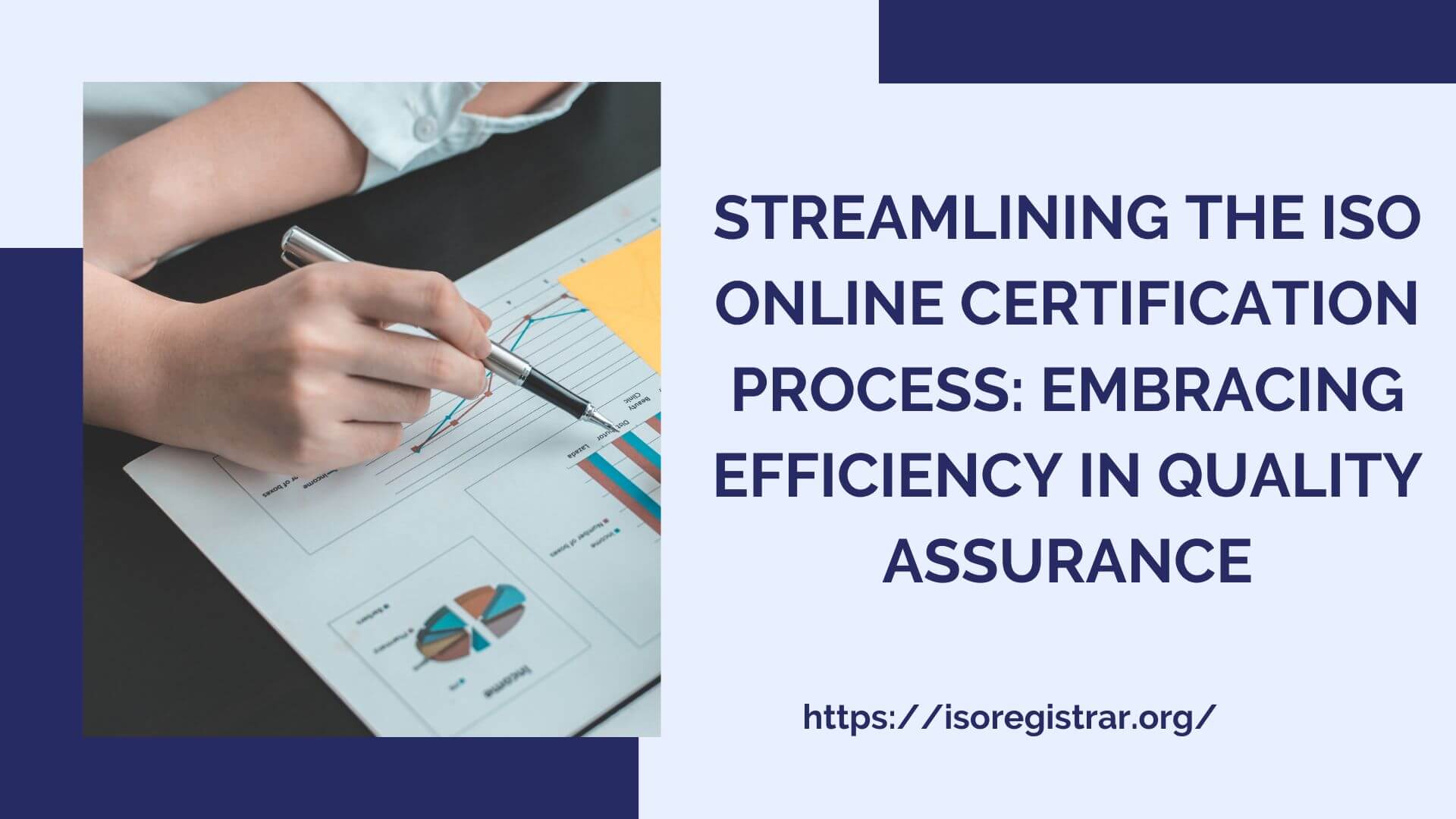Streamlining the ISO Online Certification Process: Embracing Efficiency in Quality Assurance

Introduction
In an ever-evolving global business landscape, maintaining high-quality products and services is paramount for any organization’s success. The International Organization for Standardization (ISO) offers a set of globally recognized standards that help companies establish and uphold their commitment to quality, efficiency, and customer satisfaction. However, the traditional process of obtaining ISO certification has often been seen as cumbersome and time-consuming. Fortunately, with the advent of technology and the digital age, the ISO certification process has undergone a significant transformation, paving the way for a streamlined ISO online certification process that promises efficiency, convenience, and improved accessibility.
The Evolution of ISO Certification Process
Historically, the ISO certification process was characterized by paper-heavy documentation, complex bureaucratic procedures, and prolonged certification timelines. Organizations seeking ISO certification would have to navigate through a series of stages, involving exhaustive documentation, multiple onsite visits from auditors, and extensive waiting periods. This not only strained organizational resources but also deterred many businesses, especially small and medium enterprises (SMEs), from pursuing ISO certification due to the associated costs and complexities.
The Digital Revolution and ISO Certification
The digital revolution has brought about a profound shift in the way businesses operate and interact with various aspects of their operations. Recognizing the need for efficiency and accessibility, ISO certification bodies and organizations alike began to explore the potential of digital technologies to streamline the certification process.
Key Features of Streamlined ISO Online Certification Process
Digital Documentation:
One of the significant hurdles in the traditional certification process was the need for voluminous physical documentation. The online certification process allows organizations to submit their documentation digitally, reducing paperwork and enabling easy sharing and tracking of documents.
Remote Auditing:
With the help of advanced communication technologies, remote auditing has become a reality. Organizations can now undergo audits from certified auditors without the need for physical presence. This not only saves time and travel expenses but also opens up opportunities for businesses located in remote areas to pursue ISO certification.
Real-time Tracking:
The online certification process often comes with a dedicated portal that allows organizations to track the progress of their certification application. This transparency ensures that organizations are aware of the current stage of their application and any additional requirements needed for successful certification.
Interactive Workshops:
Many online certification providers offer virtual workshops and training sessions to help organizations understand the ISO standards better, prepare for audits, and implement necessary quality management practices. These sessions enhance the organization’s knowledge and increase the likelihood of successful certification.
Faster Turnaround:
By eliminating the need for extensive paperwork and reducing administrative overhead, the streamlined online certification process significantly reduces the time required for certification. This enables organizations to reap the benefits of ISO certification faster and remain competitive in their industry.
Cost-effectiveness:
The reduced need for travel, physical documentation, and prolonged processes leads to cost savings for both the organizations seeking certification and the certification bodies themselves. This cost-effectiveness makes ISO certification more attainable for SMEs and businesses with limited resources.
Challenges and Considerations
While the streamlined ISO online certification process offers numerous benefits, there are challenges that need to be addressed. Data security, reliable internet connectivity, and the need for standardized virtual auditing protocols are some of the considerations that must be taken into account to ensure the integrity of the certification process.
Suggested Read: ISO 45001:2018 Certificate
Conclusion
The transition from the traditional ISO certification process to a streamlined online approach marks a significant advancement in the field of quality assurance. The digital transformation has brought efficiency, accessibility, and convenience to an otherwise complex and time-consuming process. As businesses continue to adapt to the evolving landscape, embracing the opportunities presented by the streamlined ISO online certification process will undoubtedly contribute to their growth, competitiveness, and commitment to delivering exceptional quality to their customers.





